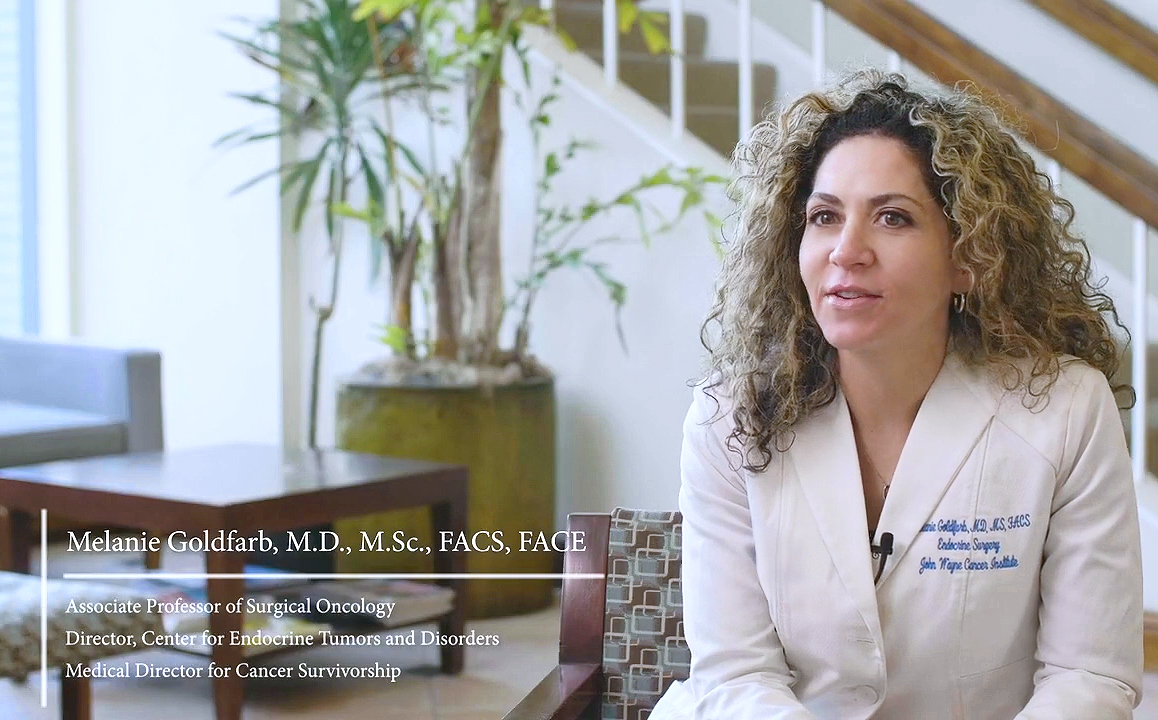
Thyroid Cancer in Adolescent and Young Adults (AYA) have surpassed Breast Cancer, Testicular, and Melanoma of the Skin
In 2021, thyroid cancer jumped from the second leading cause of cancer in Adolescent and Young Adults (AYAs), ages 15 – 39 years old, to the leading cause of cancer for this group. It is estimated that new cancers among AYAs in the U.S. is expected to reach 88,260 people this year, of which thyroid cancers encompass 16 percent.1
What does the thyroid do and how are AYAs affected?
Thyroid cancer develops in the thyroid gland, which is a butterfly-shaped organ found in the lower front of the neck. According to Dr. Melanie Goldfarb, Director, Center for Endocrine Tumors and Disorders and Professor of Surgical Oncology at Saint John’s Cancer Institute in Santa Monica, California, the thyroid gland regulates the body’s hormones, metabolism, temperature and heart rate, and is vital for the body’s growth and development.
“Within the year, thyroid cancer went from #2 in AYA to it being the #1 cancer in that age group.”
Thyroid cancer is usually asymptomatic, and in younger patients2 is ordinarily only detected when big enough to be felt by the patient’s clinician on a physical exam. In older patients and some younger patients, it is found incidentally on imaging performed for unrelated reasons. 8
What makes AYAs with cancer remarkable and who should care for the AYA patient?
The impact cancer can have on an AYA patient can be overwhelming and life-altering.4 In general, young patients can experience disruptions in education, employment, and social life, while coping with financial challenges alongside navigating the healthcare system. AYAs can also experience physical changes, such as weight gain, hormone imbalance, changes in the voice, surgical scars, and having to confront mortality earlier in life. There are also a wide range of potential late effects that AYAs are at a high-risk for.4,5
Many AYA survivors report a variety of unmet needs within a year after diagnosis; 56% report no access to mental health professionals, 58% no access to cancer rehabilitation, and/or, 63% report no access to pain management services. In addition, 24.3% of thyroid cancer survivors having a prevalence to clinical disorders such as anxiety, depression, or PTSD.4 Young thyroid cancer patients are more commonly women, and therefore many have questions about fertility, pregnancy, or adjusting to becoming a new parent when newly diagnosed.2,3,4
“Adolescent and Young Adults are long-term survivors.”
Treatment and management of AYA patients fall between pediatric and adult medical and surgical oncology frameworks, neither of which are ideally suited to address the complex distinct, biological, social, and economic needs of an AYA patient.8
How do you treat thyroid cancer and what is the prognosis in young patients?

Thyroid cancer is almost always treated with surgery – it is considered a surgical disease. In recent times, some very small thyroid cancers in older patients are being followed by ‘active surveillance’, since many thyroid cancers are slow growing and seemingly self-limited to the thyroid gland. Moreover, survival for thyroid cancer is excellent, nearing a 98% five-year survival in the younger age groups.6,8
Why are women more likely to have thyroid cancer?
It is still unknown. Some clinicians believe hormones play at least some role. In prepubescent boys and girls, the ratio of thyroid cancer seen in each population is the same. After puberty, girls diagnosed with thyroid cancer nearly triples2,while boys roughly stay on the same trajectory. However, if hormones were the only culprit for thyroid cancer, post-menopausal women would then have a similar pattern to pre-pubescence, which is not the case. In post-menopausal women, thyroid cancer incidence remains much higher in women.3,8
In the article, Natural history of thyroid cancer, a review, “thyroid cancers have long been considered to arise in middle ages, and after their repeated proliferation, resulting in further damage to the genome, they progress to more aggressive and lethal cancers.” However, new findings have suggested otherwise. Studies as recent as 2014, reported, “[it] might lead to a marked change in our understanding of the natural history of thyroid cancer. These findings strongly [suggest] the existence of self-limiting cancers, which are truly malignant but do not progress to lethal cancers. The early detection of self-limiting cancers result in overdiagnosis.”6
About the author
This article was written in collaboration with Dr. Melanie Goldfarb, Professor of Surgery, and Director of Endocrine Tumors and Disorders at Providence Saint John’s Health Center and Saint John’s (formerly the John Wayne) Cancer Institute.
If you have questions regarding thyroid treatments and want to talk to an expert, please contact the endocrine center of excellence to speak with a clinician.
Challenges and Considerations in the Care of AYAs with Thyroid Cancer—a webinar
On Friday, October 1, 2021, Dr. Melanie Goldfarb participated in an invited symposium at the American Thyroid Association (ATA) annual meeting. Her presentation was on, Challenges and Considerations in the Care of AYAs with Thyroid Cancer, 7.
References
- Cancer Among Adolescents and Young Adults (AYAs) — Cancer Stat Facts
- Thyroid cancer in adolescents and young adults
- Cancer statistics for adolescents and young adults
- Cancer Facts & Figures 2020
- Unmet information and support needs in newly diagnosed thyroid cancer: comparison of adolescents/young adults (AYA) and older patients
- Natural history of thyroid cancer [Review]
- American Thyroid Association Annual Meeting
- Interview with Dr. Melanie Goldfarb, September 2021

